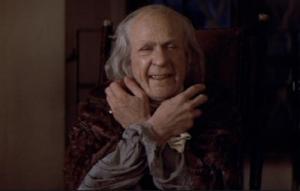-
Mozart – Balance and Perfection – Harmony – Beach Boys – Beatles –MonaLisa Twins
In one of the early Beatles interviews, a smart Alec interviewer, perhaps just to be humorous, tells the Beatles they had “….a plain diatonic.”, to which the response was a blank grin. Including myself.
Well I did a little online research on youtube and learned what a “Diatonic” is.
So just for fun, what might a diatonic have to do with the Beatles and MLT?It begins with the question, why is Mozart a genius? He was the master of turning something simple into the sublime. Taking something pure and molding it into something that expresses unfulfillable longing. In his best music there is a sense that Mozart is reaching out towards the infinite.
https://www.youtube.com/watch?v=xYHJRhRym1UMozart wrote a lot of piano concertos. The challenge was providing balance.
How to provide enough balance between the soloist (piano) playing alone, the orchestra playing alone, and the piano and orchestra playing together in balance, so that it never feels too one sided.Mozart solved this problem by creating balance and perfection in his music by blending a simple baseline voice (purity) with melody (tonal color).
This perfect balance of form can happen on a smaller scale
In music theory it is referred to as Diatonicism (purity) and Chromaticsm (color).
A diatonic scale is a series of notes that form a single voice that is simple and plain. It consists of 5 whole tones and two half steps or semitones. It is thought of as having to do with purity.
A chromatic scale is a more complex series of notes with twelve pitches, each a semitone above or below its adjacent pitches. It is thought of as having to do with color.
Mozart’s genius was being able to beautifully blend diatoniism (purty) and chromaticism (color) to create the absolute sublime.This is evident in his music where a single instrument is accompanied by an orchestra like the Piano Concerto No 23, 2nd movement.
https://www.youtube.com/watch?v=YHVwXy4J4WQ
Here the piano is singing alone, solitary and in pain (purity). Then in an extraordinary moment in music the Orchestra responds with color to produce a sublime effect. Mozart blends Diatonicism (purity) with Chromatacism (color/melody). This method would shape and transform concertos and music for hundreds of years after Mozart.Did any of that make sense? Sort of? Maybe?
Perhaps John, Paul, George and Ringo may not have realized it, but maybe diatoncism and chromatcism played out wonderfully and effortlessly in some of their most beautiful music without them consciously knowing that’s what they created. It can be the vocals (diatonicism/purity), and guitars or instruments (chromaticism/tonal color) forming that perfect balance, or lead guitar (diatoncism) and vocals/bass instruments/rhythm (chromaticism), or any other combination.
Perhaps Mona and Lisa’s vocal harmony is diatonicism and chromaticism forming naturally, creating that perfect sublime balance, that Mozart tried to achieve hundreds of years ago.
https://www.youtube.com/watch?v=2h9udS8mxkE
https://www.youtube.com/watch?v=QsiKXfFkRoA
Log in to reply.


